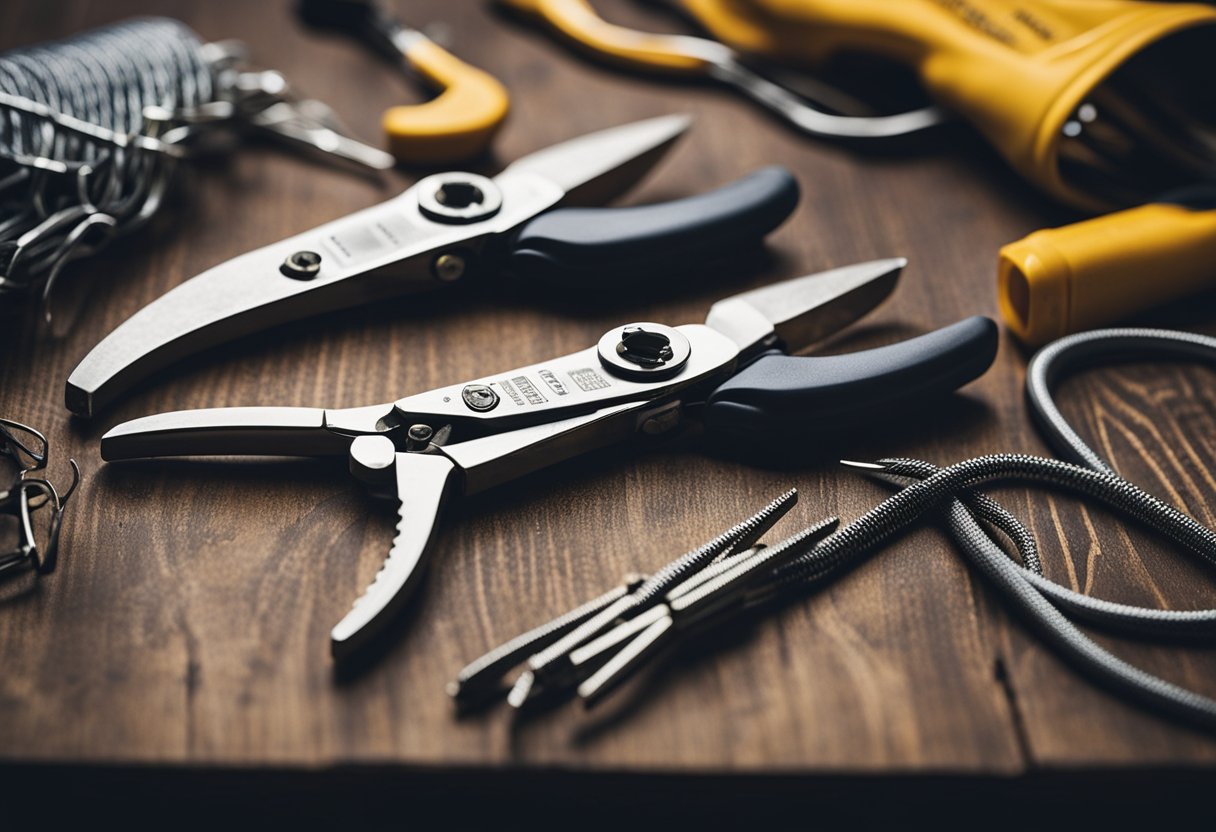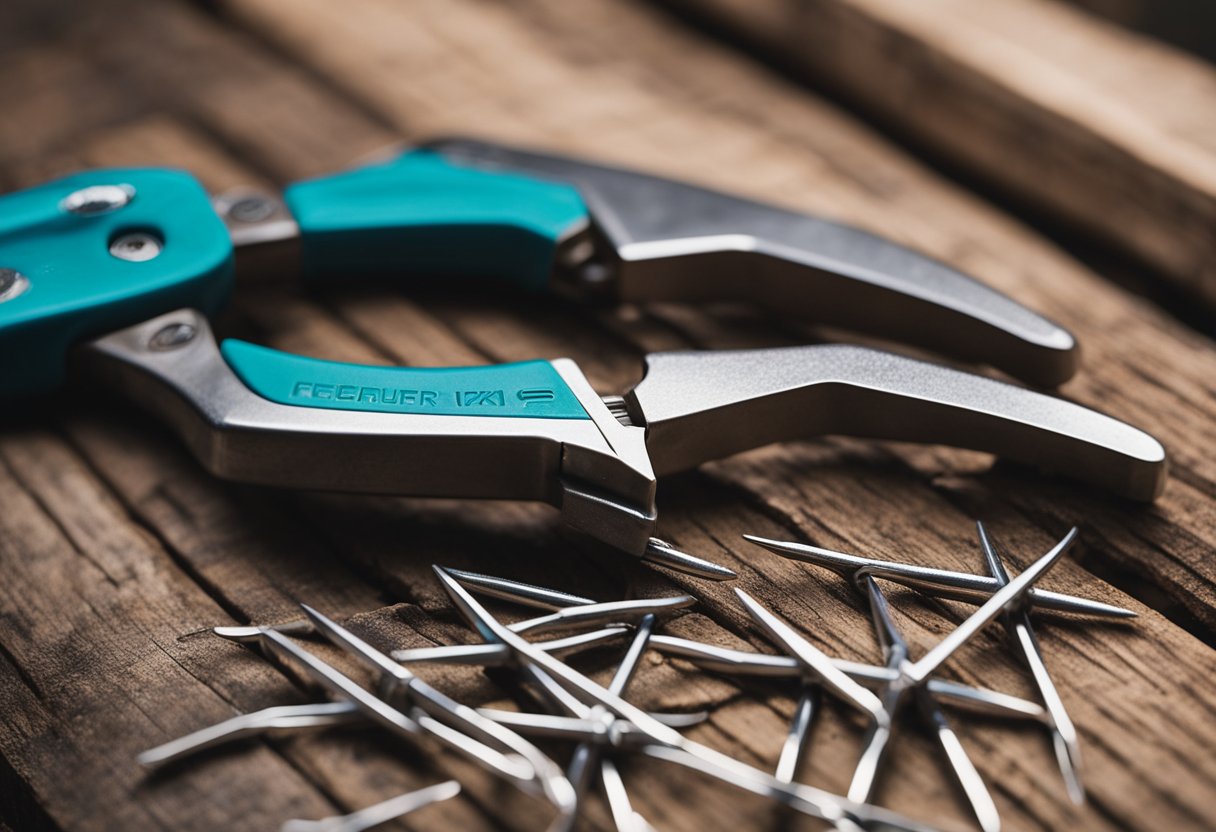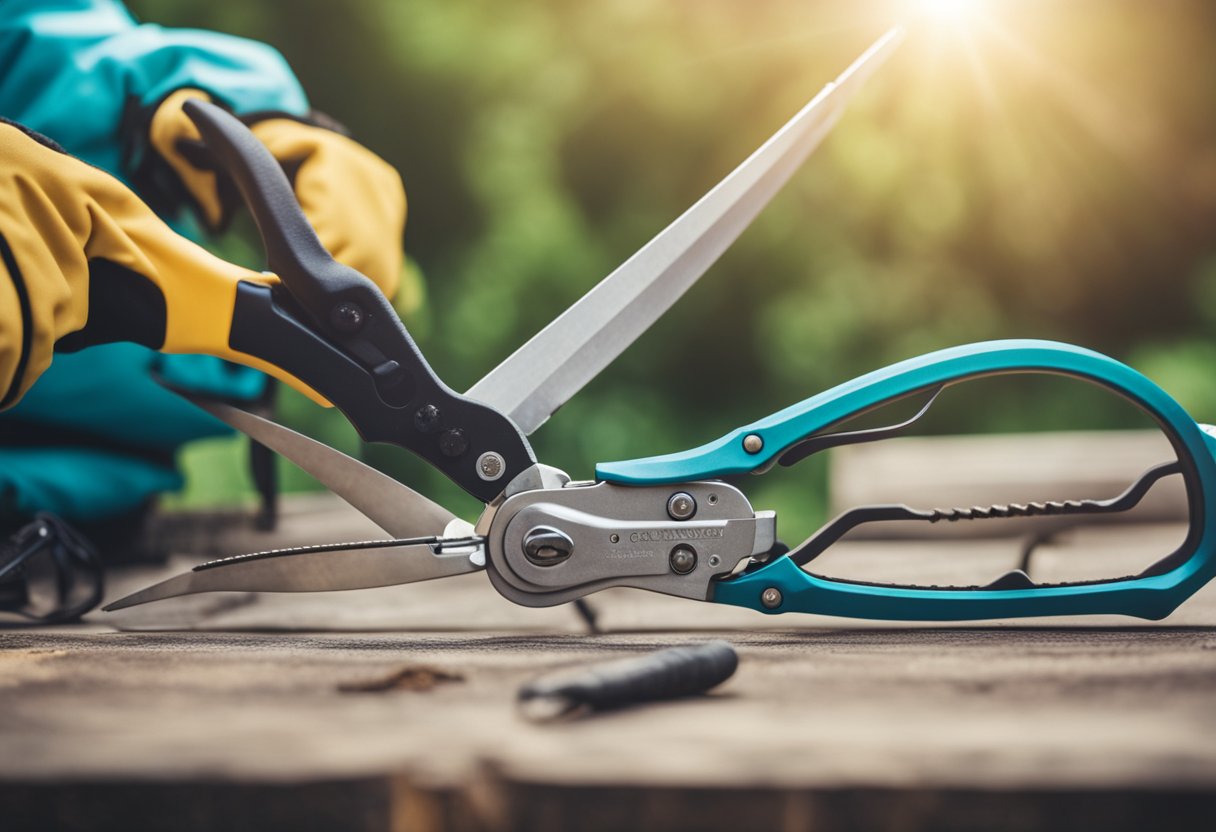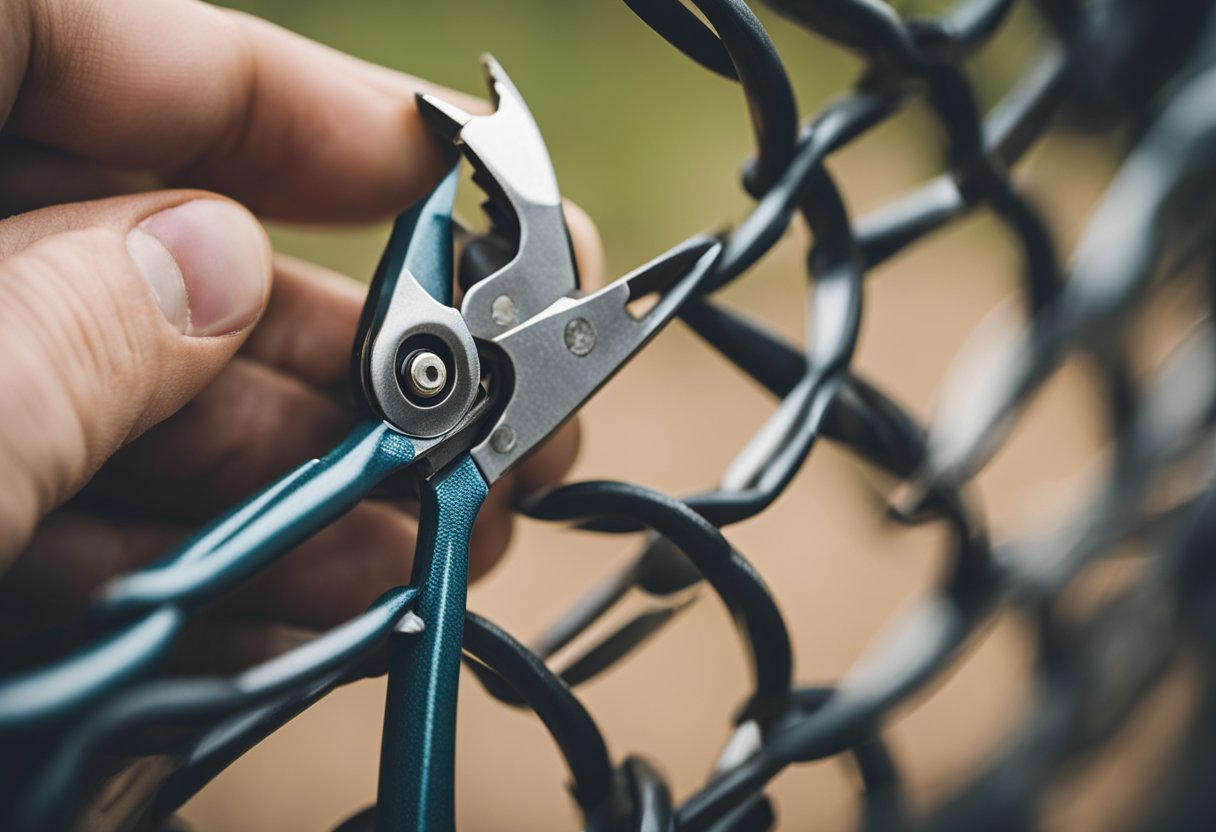Fencing pliers are a versatile tool that can be used for a variety of tasks. From installing new fences to repairing old ones, these pliers can help you get the job done quickly and efficiently. If you’re new to fencing, you may be wondering how to use fencing pliers. In this article, I’ll provide you with a step-by-step guide on how to use fencing pliers and some tips for getting the most out of this handy tool.

Before we dive into the details of how to use fencing pliers, it’s important to understand what they are and how they work. Fencing pliers typically have a hammerhead, a claw or spike, and a pair of gripping jaws. These features allow you to pull out staples, cut wires, splice wire, tension wire, and more. Understanding the different parts of fencing pliers and their functions will help you use them more effectively.
To get started with fencing pliers, you’ll need to prepare your work area and familiarize yourself with the basic functions of the tool. Once you’ve done that, you can move on to more advanced techniques and learn how to maintain and care for your fencing pliers. By following these steps, you’ll be able to use fencing pliers like a pro in no time.
Key Takeaways
- Understanding the basic functions of fencing pliers is essential for using them effectively.
- Proper preparation and maintenance are key to getting the most out of your fencing pliers.
- By learning some advanced techniques and following safety measures, you can use fencing pliers for a variety of tasks.
Understanding Fencing Pliers
As someone who has worked with fencing pliers for a while, I can confidently say that they are one of the most versatile tools in the fencing industry. Fencing pliers are specialized multi-function tools that are used for wire fencing. They are designed to install, repair, or demolish fences. Fencing pliers are a must-have tool for anyone who works with wire fencing.
Parts of Fencing Pliers
Fencing pliers have several parts that make them a unique tool. The following are the main parts of fencing pliers:
- Handle: This is the part of the pliers that you hold. It is usually made of rubber or plastic to provide a comfortable grip.
- Jaws: The jaws are the part of the pliers that do the work. They are made of steel and are designed to cut, grip, and bend wire.
- Cutting Edge: The cutting edge is located at the base of the jaws. It is used to cut wire.
- Hammer Head: The hammer head is located at the back of the pliers. It is used to drive staples and nails into wood.
Multi-Purpose Tool
Fencing pliers are considered a multi-purpose tool because they can be used for several tasks. They can be used to cut wire, hammer staples, pull staples, and twist wire. Fencing pliers are also used to bend and shape wire. They are a versatile tool that can be used for many different tasks.
Specialized Tool
Fencing pliers are a specialized tool that is used in the fencing industry. They are designed to work with wire fencing and are not used for other types of fencing. Fencing pliers are a must-have tool for anyone who works with wire fencing. They are designed to make the job easier and more efficient.
In conclusion, fencing pliers are a versatile and specialized tool that is used in the fencing industry. They are designed to work with wire fencing and are a must-have tool for anyone who works with wire fencing. Fencing pliers are a multi-purpose tool that can be used for several tasks. They are designed to make the job easier and more efficient.
Preparation Before Use

Before using fencing pliers, it is important to take several precautions to ensure your safety and the safety of others around you. Here are some things to keep in mind before using fencing pliers:
-
Protective gloves: It is important to wear protective gloves while using fencing pliers. Gloves can help prevent injuries to your hands while handling sharp or rough materials. I recommend using gloves made of leather or other durable materials that can withstand wear and tear.
-
Eye protection: Fencing pliers can sometimes create flying debris or sparks that can cause eye injuries. To prevent this, I recommend wearing safety glasses or goggles while using fencing pliers. This will help protect your eyes from any potential hazards.
-
Safety precautions: Always follow safety precautions when working with fencing pliers. This includes keeping the pliers away from children, wearing appropriate clothing, and using the pliers only for their intended purpose. Never use fencing pliers as a hammer or a pry bar.
-
Clean up: After using fencing pliers, it is important to clean up any debris or tools that may have been left behind. This can help prevent injuries to others who may come in contact with the area. I recommend using a broom and dustpan to sweep up any debris, and storing the pliers in a safe and secure location.
By following these safety precautions and taking the necessary steps to prepare for using fencing pliers, you can help ensure a safe and successful fencing project.
Basic Functions of Fencing Pliers
Fencing pliers are an essential tool for anyone who works with fences, wires, or mesh. They are a versatile tool with many functions, including cutting, gripping, twisting, hammering, bending, and levering. In this section, I will discuss the basic functions of fencing pliers.
Cutting
One of the primary functions of fencing pliers is cutting. Fencing pliers are equipped with side cutting jaws that can cut through wires of various thicknesses. To cut wire with your fencing plier, place the wire between the side cutting jaws when open, squeeze the handle until the wire is cut, and then release the plier. Fencing pliers can also be used to cut nails and staples.
Gripping
Fencing pliers are also designed to grip wires and other materials. The plier end of the tool can be used to grip the wire, allowing you to twist or bend it as needed. This function is particularly useful when working with fencing wires that need to be twisted together or tensioned.
Twisting
Twisting is another function of fencing pliers. The plier end of the tool can be used to twist wires together, creating a secure connection. This function is particularly useful when splicing fencing wires together.
Hammering
Fencing pliers also have a hammerhead on one side of the head, which can be used to strike nails or other objects. This function is particularly useful when working with a nail gun is not possible.
Bending
Fencing pliers can also be used to bend wires and other materials. The plier end of the tool can be used to bend wires into the desired shape, allowing you to create custom fencing designs.
Levering
Finally, fencing pliers can be used as a lever to remove nails or other objects. The claw or spike on the other side of the head can be used to pry out sunken U nails from poles or other surfaces.
In conclusion, fencing pliers are a versatile tool with many functions. They are an essential tool for anyone who works with fences, wires, or mesh. By understanding the basic functions of fencing pliers, you can use them to complete a wide variety of fencing projects.
Advanced Techniques
When you become more comfortable using fencing pliers, you can try some advanced techniques to make your fencing projects even easier and more efficient. Here are some of the most useful advanced techniques that I have found:
Pulling Staples
If you need to remove a staple from a fence post or rail, you can use the hammer head of your fencing pliers to pull it out. Simply place the hammer head over the staple and pull back. The staple should come out easily.
Twisting Wire
If you need to twist two wires together to splice them, you can use the jaws of your fencing pliers to do it. Simply place the two wires between the jaws and twist the pliers to twist the wires together. This is a great way to create a strong splice that will hold up well over time.
Driving Staples
If you need to drive a staple into a fence post or rail, you can use the hammer head of your fencing pliers to do it. Simply place the staple where you want it and hit it with the hammer head. This is a great way to quickly and easily fasten wire to a fence.
Splicing Wire
If you need to splice two wires together, you can use the jaws of your fencing pliers to do it. Simply place the two wires between the jaws and twist the pliers to twist the wires together. Then, use the cutting edge of the pliers to trim off any excess wire. This is a great way to create a strong splice that will hold up well over time.
Fastening
If you need to fasten wire to a fence post or rail, you can use the jaws of your fencing pliers to do it. Simply place the wire between the jaws and squeeze the pliers to fasten the wire in place. This is a great way to quickly and easily secure wire to a fence.
Tensioning
If you need to tighten wire on a fence, you can use the jaws of your fencing pliers to do it. Simply place the wire between the jaws and squeeze the pliers to tighten the wire. This is a great way to quickly and easily adjust the tension on a fence.
Overall, fencing pliers are an incredibly versatile tool that can be used for a wide variety of fencing projects. With a little practice, you can master these advanced techniques and become a fencing pro in no time!
Maintenance and Care

As with any tool, proper maintenance and care are essential to ensure that your fencing pliers last a long time and perform at their best. Here are some tips on how to maintain and care for your fencing pliers.
Rust Prevention
One of the biggest enemies of any metal tool is rust. Rust can cause your fencing pliers to become dull and difficult to use. To prevent rust, it’s important to keep your fencing pliers clean and dry. After each use, wipe down the pliers with a dry cloth to remove any dirt or debris. If your pliers get wet, dry them off as soon as possible to prevent rust from forming.
Cleaning
Regular cleaning is important to keep your fencing pliers in good condition. To clean your pliers, use a soft-bristled brush or cloth to remove any dirt or debris. If there is any stubborn dirt or rust, you can use a rust remover or a solution of vinegar and water to clean the pliers. After cleaning, dry the pliers thoroughly to prevent rust from forming.
Lubrication
Lubrication is important to keep your fencing pliers working smoothly. Apply a few drops of machine oil to the pivot point and other moving parts of the pliers. This will help to prevent rust and keep the pliers moving freely.
By following these simple maintenance and care tips, you can ensure that your fencing pliers last a long time and perform at their best. Regular cleaning, rust prevention, and lubrication will help to keep your pliers in good condition and ready for use whenever you need them.
Safety Measures

When using fencing pliers, it is important to take some safety precautions to avoid injuries. Here are some safety measures that I recommend:
-
Eye Protection: When using fencing pliers, debris can fly into your eyes, which can cause serious eye injuries. Therefore, I always wear protective eyewear when using fencing pliers. I recommend using safety glasses or goggles that meet the ANSI Z87.1 standard.
-
Protective Gloves: Fencing pliers can be sharp and cause cuts and blisters on your hands. Therefore, I recommend wearing protective gloves when using fencing pliers. I recommend using gloves that are made of thick and durable material, such as leather or synthetic leather.
-
Proper Handling: Fencing pliers can be heavy and difficult to handle. Therefore, it is important to use proper handling techniques when using fencing pliers. I recommend holding the pliers with both hands and keeping your fingers away from the moving parts.
In summary, when using fencing pliers, it is important to wear eye protection, protective gloves, and use proper handling techniques. By taking these safety measures, you can avoid injuries and work more efficiently.
Choosing the Right Fencing Pliers

When it comes to choosing the right fencing pliers, there are a few things to consider. First and foremost, you want to make sure that the pliers you choose are the right size for the job. Fencing pliers come in a variety of sizes, so it’s important to choose a size that is appropriate for the type of work you’ll be doing.
Another important factor to consider is the type of wood you’ll be working with. If you’ll be working with softwood, you’ll want to choose a pair of pliers that are designed to work with softer materials. On the other hand, if you’ll be working with hardwood, you’ll want to choose a pair of pliers that are designed to work with harder materials.
Gauges are also an important consideration when choosing fencing pliers. The gauge of the wire you’ll be working with will determine the size of the pliers you’ll need. Make sure to choose pliers that are designed to work with the gauge of wire you’ll be using.
Efficiency and versatility are also important factors to consider. Look for pliers that are designed to be efficient and versatile, with multiple functions and features that will make your job easier.
Finally, functionality is key when choosing fencing pliers. Look for pliers that are designed to be easy to use and comfortable to hold, with features like non-slip grips and ergonomic handles.
Overall, choosing the right fencing pliers is an important step in ensuring that your fencing project is a success. By considering factors like size, wood type, gauge, efficiency, versatility, and functionality, you can choose a pair of pliers that will help you get the job done quickly and easily.
Frequently Asked Questions
What are the different types of fencing pliers?
There are different types of fencing pliers available in the market, each with its unique features. Some of the most common types of fencing pliers include standard fencing pliers, lineman’s pliers, and chain link fence pliers. Each type is designed for specific tasks related to fencing, such as cutting wires, pulling staples, and stretching the fence wire.
How do you tension a fence wire with pliers?
To tension a fence wire with pliers, you will need to use a fence repair tool, which is a type of fencing plier that has a ratcheting mechanism. First, you need to attach the fence repair tool to the fence wire, and then use the ratcheting mechanism to tighten the wire until it is taut. This will ensure that the fence is properly tensioned, which is essential for maintaining its strength and stability.
How do you use a fence repair tool?
To use a fence repair tool, you need to attach it to the fence wire that needs to be repaired. Once attached, you can use the ratcheting mechanism to tighten the wire until it is taut. This will help to repair any damage to the fence wire and ensure that it is properly tensioned.
What are the best fencing pliers?
The best fencing pliers are those that are durable, versatile, and easy to use. Some of the most popular fencing pliers on the market include Channellock 85 Fence Tool, Crescent H.K. Porter 0190MCD Power Link Bolt Cutter, and Knipex Tools 13 82 8 T BKA.
How do you use chain link fence pliers?
To use chain link fence pliers, you need to use the jaws of the pliers to grab the chain link fence wire. Once you have a firm grip on the wire, you can use the pliers to bend it into the desired shape or position. Chain link fence pliers are also useful for cutting wires and removing staples.
What are the features of Knipex fencing pliers?
Knipex fencing pliers are known for their high-quality construction and durability. They feature a hammerhead on one side of the head and a claw or spike on the other, which makes them versatile for a range of tasks. Knipex fencing pliers also have built-in wire shears, which makes them useful for cutting through thick, tough fence wire.

Hi, I’m Sal Muller of Tooltrip.com. My DIY experience led me to understand essential power tools for home projects. Tooltrip.com guides enthusiasts and professionals in choosing right tools for any job. I provide concise top tool reviews for easier, efficient DIY.

